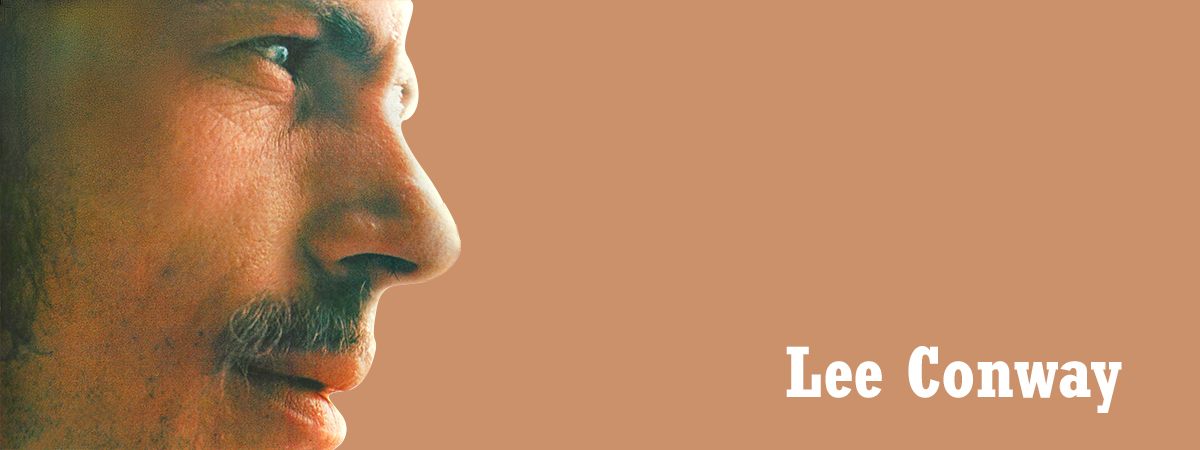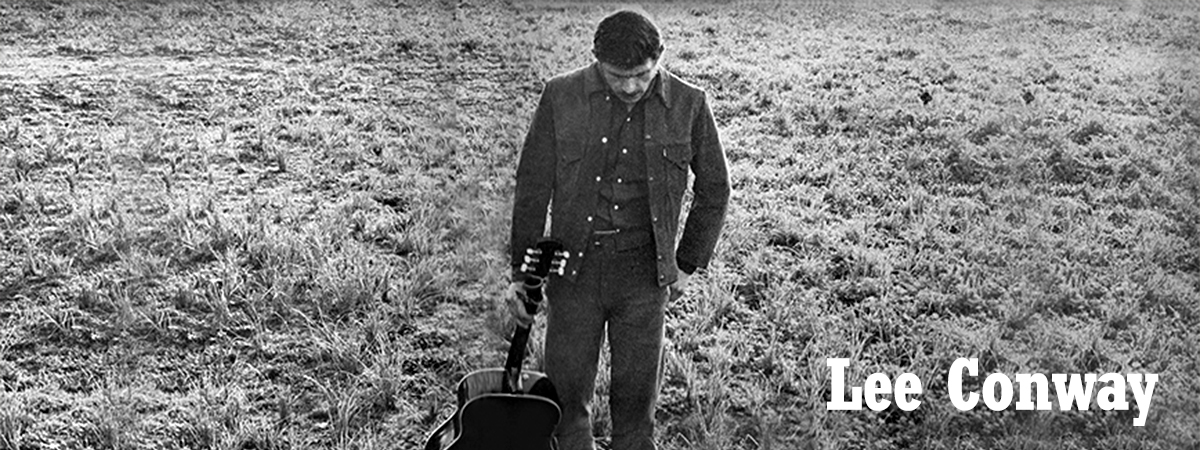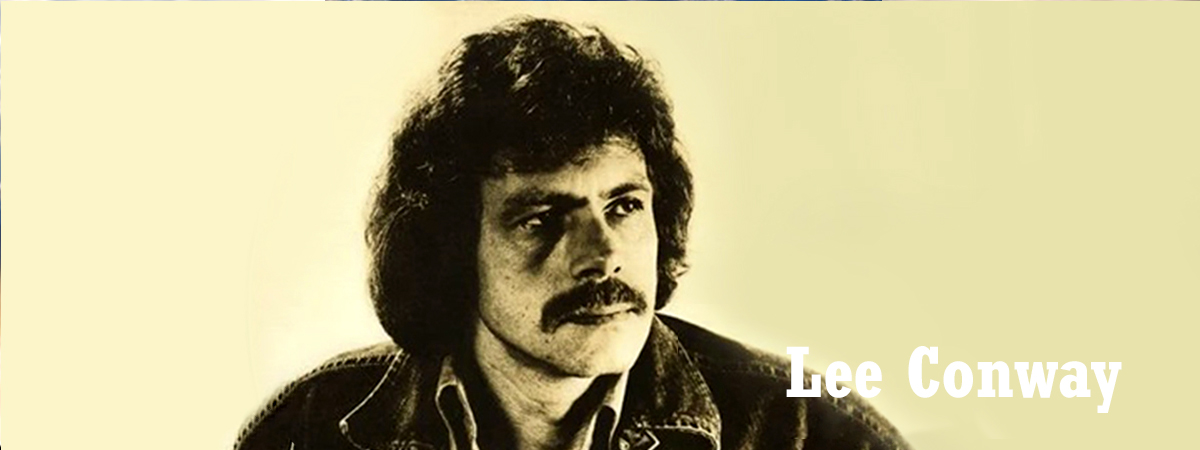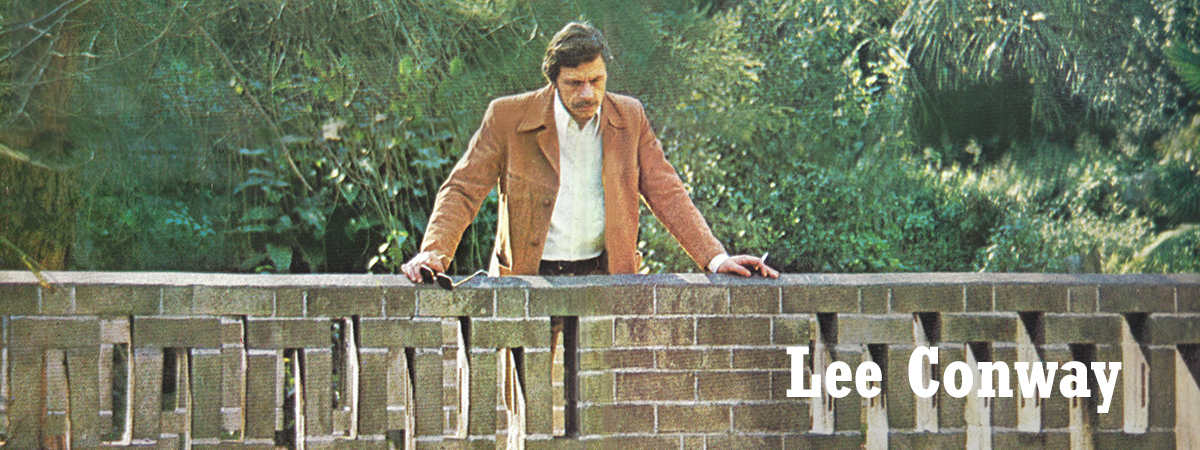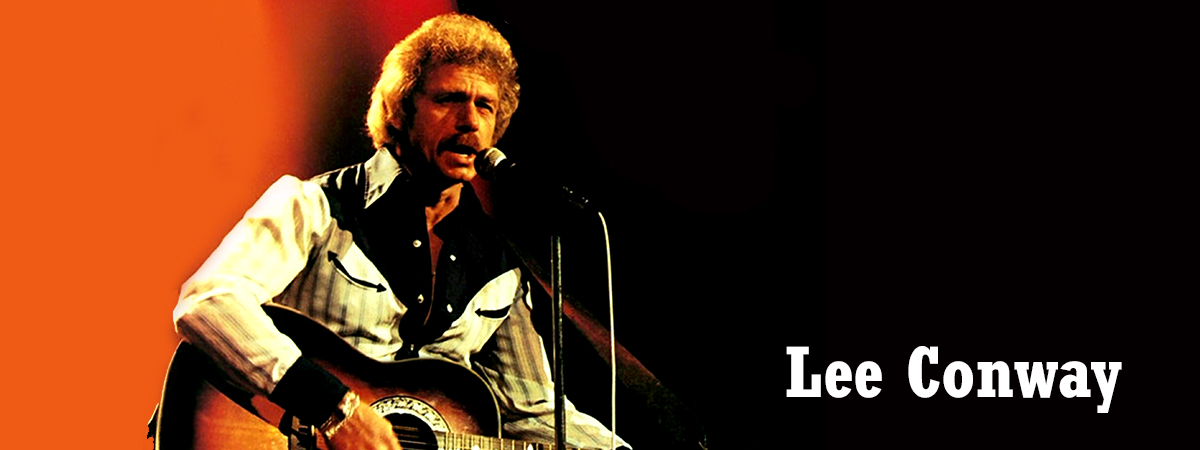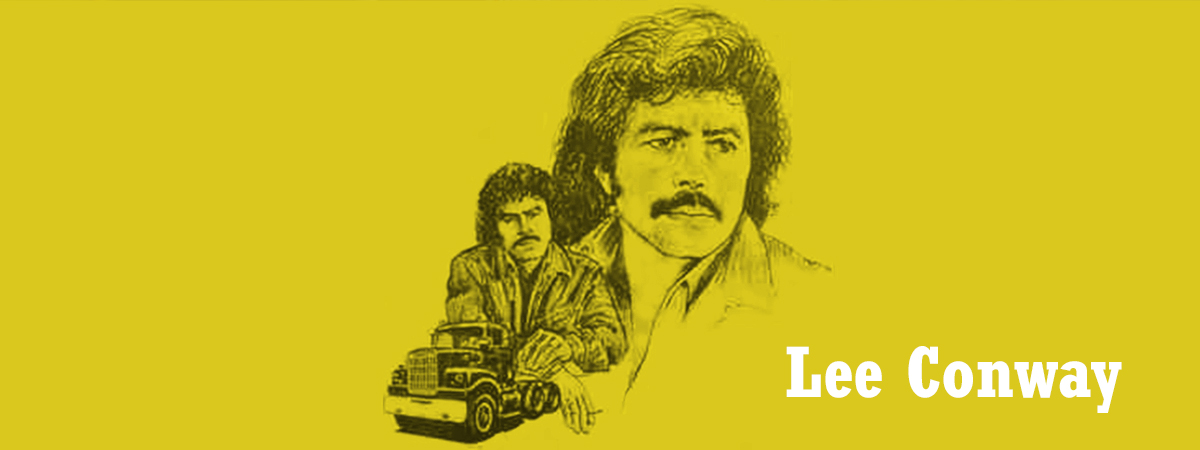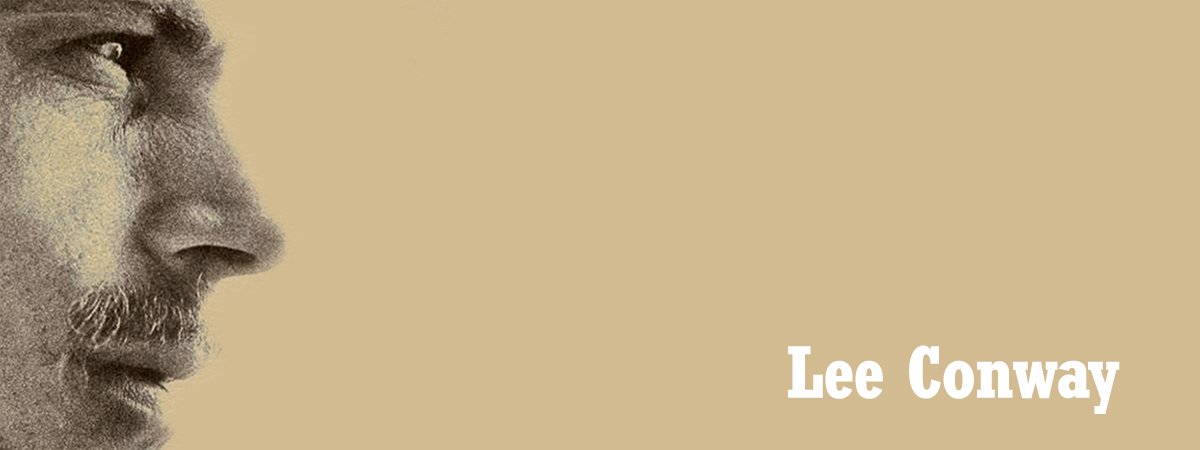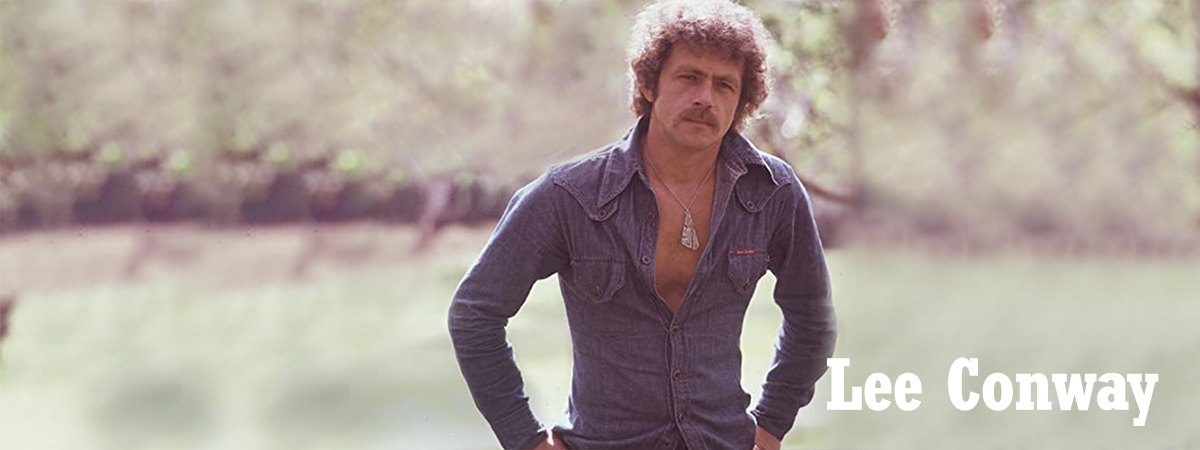 Lee Conway is a name that any connoisseur of Australian ’70s hits will know well. Born on March 10th in Poland, Conway broke into the country music circle with his debut, a sound that would roar up the Australian music charts: “Wanted Man”. “Wanted” turned out to be the right word to use – Conway won the award for “best single, album, and song” for his work “Stories We Could Tell” from the Australian Federation of Broadcasters. This was enough to kick start an international touring career, and foster a reputation for his distinctive voice and professional demeanour – this boy from Fitzroy was gonna travel far!
Lee Conway is a name that any connoisseur of Australian ’70s hits will know well. Born on March 10th in Poland, Conway broke into the country music circle with his debut, a sound that would roar up the Australian music charts: “Wanted Man”. “Wanted” turned out to be the right word to use – Conway won the award for “best single, album, and song” for his work “Stories We Could Tell” from the Australian Federation of Broadcasters. This was enough to kick start an international touring career, and foster a reputation for his distinctive voice and professional demeanour – this boy from Fitzroy was gonna travel far!
Borne on the wings of his professionalism and unique voice, Conway would soon become the face of the “International Festival of Country Music”, a noteworthy achievement for artists of the genre worldwide. He had caught the eye of the event organiser, the one and only Jerry Lee Lewis. Together with Waylon Jennings, Loretta Lynn, Bobby Bare and Rick Nelson, Conway wowed the British audience, and it was Conway who stood out from the glitzy crowd when he was presented with the “Most Promising Performer of Great Britain” Award at the London Palladium.
From there, this modern titan toppled his competition through talent and charisma, his single “All I want to Do in Life” outpacing the likes of Johnny Cash’s “Ghost Riders In The Sky” and Glen Campbell’s “California” on the radio charts. Conway put Australia on the global map for country music! Indeed, one could say Conway is Australia’s answer to Johnny Cash, the passion in their smooth voices clearly cut from the same cloth, but woven into two elegantly different things.
Conway then took a more relaxed approach to his career. Fame and success carry a high price after all, and management and personal problems threatened to topple Lee’s career. After representing Australia during the ANZAC Festival in Japan, Lee returned home and worked on his “Big Iron” album, and created the ill-fated “Cowboys & Engines” album which was never released due to management problems – the lovingly crafted album had thousands of copies warped and ruined! But he bounced back like a champion, the rugged Aussie cowboy now hosting the “Conway Country” TV show. As for “Cowboys & Engines”, you can even listen to it online nowadays, due to dedicated restoration efforts.
Conway’s career also took him to such lauded events as performing before Her Majesty Queen Elizabeth II, and teaming up with Col Elliott to write “Gone Fishin'”, a comedy advertisement jingle that soared to enormous popularity on CMTV. After all, Lee’s prolific song writing ability is not confined to country music, as for many years Lee has written and produced many award-winning television and radio jingles. But the accolades don’t stop there, as Lee Conway was immortalised by being inducted into the Hands of Fame in 1982, and to this day his music is still beloved the world over.
He redefined what Australian musicians can do, and reshaped the country genre as we know it with his creative passion and storied journey through music. He has been regarded as one of Australia’s most loved and respected country music artists and carved a special place in the hearts of all music fans.
Lee Conway is a Sweet Peach records artist. Lee Conway is published by Blue Pie Publishing USA (ASCAP)
Conway’s storied history is one that Country fans and Aussie music fans alike will be familiar with. This timeline outlines the journeys he’s been on and the music he has crafted throughout his notable career.
- 1940: Born March 10 in Poland.
- 1943: His family moved to Australia and settled in Fitzroy, Victoria.
- 1950s: The family moves to Aspendale, where Lee is exposed to music for the first time, mainly Buddy Holly and Elvis Presley. Then he hears Johnny Cash – and the die was cast.
- 1950s: Learnt to play tub bass and joined a local band, Bobby Cookson and the Premiers, playing gigs at the Mordialloc Surf Life Saving Club and at the Malvern and Springvale town halls.
- 1967: He leaves the band and begins to manage The Laurie Allen Revue.
- 1968: Tiring of showbiz, Lee buys a truck and begins a new career behind the wheel. After hearing Lee Hazelwood and Nancy Sinatra duets like Jackson and Sand on the radio, he bought their cassette in Adelaide. He shared a house with Colleen Hewitt and Doug Ashdown in Adelaide for a time, which was next door to a recording studio.
- 1969: He cuts a few demos, then makes his first EP in May – Fine White Stallion/Forty Coats. A few months later, he recorded Wanted Man. Released debut album Adultery.
- 1970: The single Wanted Man is released to radio. John Laws gives it heavy airplay and it becomes a chart hit. Two more 45s were released – Jody and the Kid/The Other Man, and Something New/Love and Little Joe – on Adelaide’s Sweet Peach label.
- 1971: Released Applewood Memoirs. He began performing live and on national TV on Hit Scene and Happening ’71.
- 1972: Released the album Wanted Man.
- 1973: Released the all-original album The Stories We Could Tell, which was named Best Album, Single and Song by the Australian Federation of Broadcasters.
- 1970s: Lee headlines the International Festival of Country Music at Wembley, alongside Waylon Jennings, Loretta Lynn, Bobby Bare and Rick Nelson. Event organiser Jerry Lee Lewis regards Lee as his own personal discovery and records him.
- 1970s: Presented with the Most Promising Performer of Great Britain award at the London Palladium.
- 1970s: Lee’s single All I Want to Do in Life reached #3 on the US and Canadian music charts, just underneath Johnny Cash and Glen Campbell.
- 1975: Released the albums Lee Conway and Truck On Country.
- 1976: Released the album Love Still Makes the World Go Round.
- 1977: Released the album All I Want To Do In Life.
- 1980s: Lee writes and produces many award-winning TV and radio jingles. Teams up with funnyman Col Elliott to write and record the comedy song Gone Fishin’.
- 1980s: Invited to sing on the Royal Command Gala Performance before Queen Elizabeth II.
- 1980: Management and personal problems threaten his career, so after representing Australia at the Anzac Festival in Japan, he returns home to the best-selling Big Iron album.
- 1981: Wrote the album Cowboys and Engines which was never released until many years later, online.
- 1982: Inducted into the Hands of Fame, Tamworth.
- 1984: Released the album Yes, It’s Me.
- 1985: Hosted the nationally and internationally popular Conway Country TV show and released an album of the same name.
- 1986: Released the album Conway Classics.
- 1989: Released the album Bound To Explode.
- 1992: Released the album Lay A Country Song On Me.
- 2000: A two-CD set Lee Conway: Country Classics is released.
- 2015: A compilation album, I Just Didn’t Hear: The Early Roads (1969-1973) is released.








